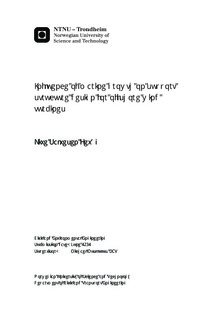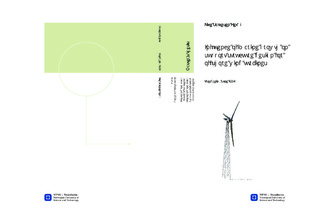| dc.contributor.advisor | Muskulus, Michael | nb_NO |
| dc.contributor.author | Fevåg, Live Salvesen | nb_NO |
| dc.date.accessioned | 2014-12-19T11:29:17Z | |
| dc.date.available | 2014-12-19T11:29:17Z | |
| dc.date.created | 2012-11-08 | nb_NO |
| dc.date.issued | 2012 | nb_NO |
| dc.identifier | 566182 | nb_NO |
| dc.identifier | ntnudaim:7455 | nb_NO |
| dc.identifier.uri | http://hdl.handle.net/11250/232165 | |
| dc.description.abstract | This Master's thesis addresses the effects of marine growth on the design of a lattice tower substructure for an offshore wind turbine. Marine growth is the unwanted colonization of marine structures by marine organisms. The current standards prescribe a thickness of 100 mm whereas in the literature, layers up to 200 mm thick have been reported for structures in the North Sea.Marine growth leads to increased wave loading on the structure. This is caused by the increased effective member diameter, as well as increased drag coefficient due to increased surface roughness. Marine growth also represents an additional non-structural mass, reducing the structural natural frequencies. Marine growth may increase flow instability and vortex shedding, but this has not been evaluated in this report. The effects of marine growth have been evaluated for the NOWITECH 10 MW reference turbine.Alteration of the natural frequencies caused dynamic amplification when structural natural frequencies approached the nP-values of the rotor. The effect was most prominent for the local-modes natural frequencies, the modes including out-of-plane deformation of the bracing.The relative importance of the increased hydrodynamic load and additional non-structural mass was investigated. It was concluded that both effects must be included in the model to describe the dynamic behaviour.The fatigue lifetime of the K-braces was more sensitive to marine growth thickness than that of the X-braces. The X-brace fatigue lifetime gave the design lifetime for this particular design and marine growth lead to significant reductions in the fatigue lifetime. Marine growth would increase the lifetime in certain points. Thus, it is necessary to check the design also without marine growth. | nb_NO |
| dc.language | eng | nb_NO |
| dc.publisher | Institutt for bygg, anlegg og transport | nb_NO |
| dc.subject | ntnudaim:7455 | no_NO |
| dc.subject | MTBYGG Bygg- og miljøteknikk | no_NO |
| dc.subject | Beregningsmekanikk | no_NO |
| dc.title | Influence of marine growth on support structure design for offshore wind turbines | nb_NO |
| dc.type | Master thesis | nb_NO |
| dc.source.pagenumber | 131 | nb_NO |
| dc.contributor.department | Norges teknisk-naturvitenskapelige universitet, Fakultet for ingeniørvitenskap og teknologi, Institutt for bygg, anlegg og transport | nb_NO |

